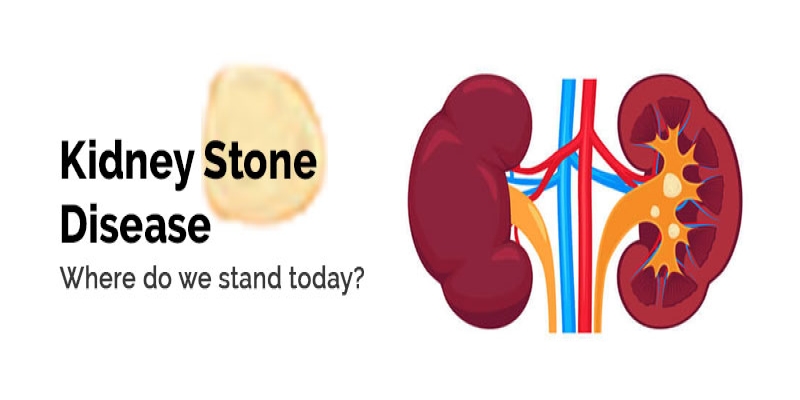Kidney Stone Disease – Where Do We Stand Today?
2020-01-18 / RG STONE HOSPITAL / Urinary / Kidney Stone

Stones (calculi) within the urinary passage have affected human beings since early civilization. It still continues to be a major health ailment. The condition leads to repeated visits to the hospital with the loss of working man-hours. Change in food habits in modern times has also increased the incidence of the disease.
Most patients are aged 25-40 years, with men being affected 3 times more than women; however, children may also be affected. Stone reformation is estimated at 10% at 1 year, 35% at 5 years and 50% at 10 years in unsupervised patients.
Recurrent formation of stones may lead to kidney failure in up to 15% of patients. Of the various causes of kidney failure, the stone disease is probably the single most preventable and easily detectable cause. Neglect of prolonged stone disease is the leading factor for the loss of kidney function.
The treatment of kidney stones changed from crude procedures to more extensive open surgical procedures. In recent times newer technologically advanced endourological (keyhole) modalities and extracorporeal shock wave lithotripsy (ESWL) have made treatment minimally invasive.
The evolution of techniques and instruments has also changed the management of stone disease during the past two decades. The smaller size of endoscopes improved electronic imaging systems, and endourological skills make endoscopic management of urinary stones a treatment of choice.
Treatment of Urinary / Kidney Stones:
There are several treatments for urolithiasis, including observation, medical expulsive therapies, ESWL, and PCNL. Each treatment is considered with regard to the clinical scenario. Failure of conservative therapy or other considerations, such as occupational requirements (e.g. airline pilots), renal insufficiency, or coexisting infections, can hasten surgical intervention and call for Flexible URS as the best modality of treatment.
Flexible Ureterorenoscopy (Retrograde Intrarenal Surgery) :
Flexible Ureterorenoscopy (Retrograde Intrarenal Surgery) with laser is the latest most advanced technology being used at all centers of RG Stone Urology & Laparoscopy Hospital across India. The procedure involves the reverse passage of a flexible miniaturized instrument (ureteroscope), to access stones within the kidney.
Diagnostic uses of RIRS include evaluating a patient with radiological filling defect, undiagnosed gross haematuria (blood in urine), or positive cytology of the upper tract, or surveillance of patients with upper tract malignancies (cancer) that have been treated endoscopically, or relapsing urinary tract infections.
Therapeutic uses of Flexible URS with laser include removing upper tract stones or other foreign bodies, treating upper tract malignancies, strictures or areas of obstruction.
This technique allows the assessment of the entire urinary system. With these high-end scopes, the urologist can visualize virtually any area of the upper collecting system, most notably the renal pelvis and its various calyces. Some flexible ureteroscopes allow access into the most difficult of anatomical areas, but these come at a high price in durability.
Flexible URS is emerging as the best treatment modality for complicated stone cases too. For children (including prepubertal), who have urolithiasis (anywhere in the urinary tract), this is becoming more widely accepted as first-line therapy.
It is especially suited for patients where ESWL cannot be performed (patients with bleeding disorders; very obese individuals) or has failed. Flexible Ureteroscopy with a holmium laser during pregnancy continues to become a more widely accepted treatment. In cases where the patient has ectopic kidneys (malformations) or has staghorn calculi, RIRS is the choice of treatment.
The procedure demands no puncture on the body and promises no bleeding with the hospital stay of a single day. This procedure is highly in demand by the working people who are suffering from kidney stones but cannot get treated owing to a lack of days off from work, like Merchant Navy officers.
It is a major leap in endourology in managing urinary stones and other pathologies in the kidney. It is a more invasive technique compared to extracorporeal shock wave lithotripsy; it reduces morbidity in patients otherwise being treated by other procedures.
Learn more about Kidney stone treatment & procedure
Categories
Hernia Repair
Appendicitis
Piles
Urological Treatment
Hernia treatment
Enlarged Prostate (BPH)
Gall Bladder Stone
Urinary / Kidney Stone
Vitamins
Indian Health Care System
Exercise
Obesity
Female Urinary Incontinence
Single Incision Laparoscopic Surgery (SILS)
Kidney Cancer
Bladder Cancer
Ovarian cancer
Nephrology
Bariatric Surgery
Kidney Function Test
Female Urology
Radiation Therapy
Alcoholic Fatty Liver
Liver disease
Gastroenterology
Kidney Disease

